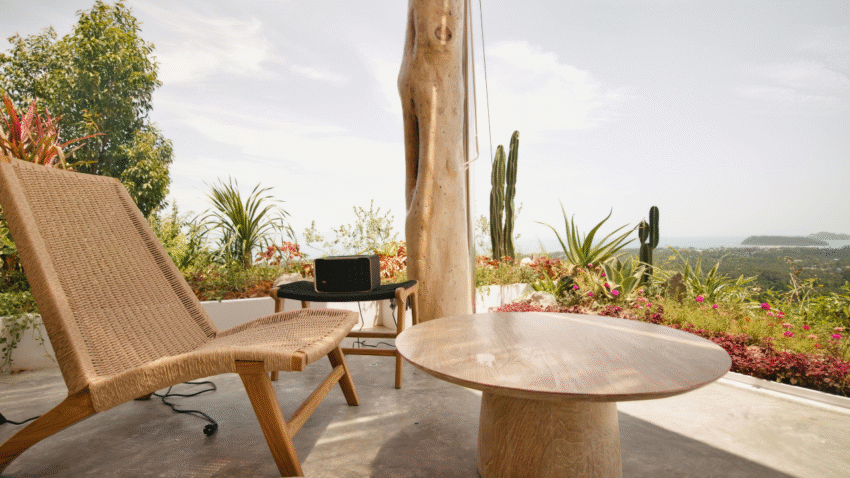Introduction
A small balcony deck can transform limited outdoor space into a relaxing retreat for morning coffee, reading, or entertaining. Even in apartments or homes with modest square footage, learning how to build a small balcony deck allows you to maximize functionality and style. If your balcony feels bare or underused, this guide will help you design, plan, and build a safe, durable, and beautiful deck that fits your space and lifestyle.
Why a Balcony Deck Matters
Balcony decks do more than just provide a place to stand—they improve your overall outdoor living experience.
- Adds comfort: A finished deck surface is far more inviting than plain concrete or tiles.
- Boosts property value: A well-designed balcony deck increases curb appeal and resale potential.
- Expands living space: Even a small balcony becomes usable for dining, working, or gardening.
- Personal style: From wood to composite boards, your choice of materials reflects your taste and lifestyle.
With proper planning, even a compact balcony can become an outdoor oasis.
Step-by-Step Guide to Building a Small Balcony Deck
1. Check Building Codes and HOA Rules
Before starting, research local regulations and building codes. Some apartments or homeowner associations have strict rules about:
- Load-bearing capacity (how much weight the balcony can support).
- Material restrictions (wood, composite, or removable decking tiles).
- Whether permanent changes are allowed.
Tip: When in doubt, consult a structural engineer to ensure safety.
2. Measure the Balcony Space
Accurate measurements are crucial for planning your layout and buying the right materials. Record:
- Length and width of the balcony.
- Clearance for doors, railings, or outdoor furniture.
- Any slopes or uneven areas that may require leveling.
Sketch a simple diagram to visualize the layout.
3. Choose Decking Materials
For balcony decks, lightweight and durable materials are best. Common options include:
- Interlocking deck tiles: Easy to install, removable, and perfect for renters.
- Pressure-treated wood: Affordable and classic, though heavier and requires sealing.
- Composite decking: Low-maintenance, weather-resistant, and available in various finishes.
- PVC or plastic tiles: Lightweight and water-resistant, ideal for balconies exposed to heavy rain.
4. Prepare the Balcony Surface
Clean the balcony thoroughly before installation:
- Sweep away dust and debris.
- Wash the surface with mild soap and water.
- Let it dry completely.
For uneven surfaces, consider adding a thin underlayment or leveling pads before placing decking.
5. Create a Substructure (if needed)
If you’re building a more permanent balcony deck (not just tiles), you’ll need a frame or substructure:
- Use pressure-treated wood joists or lightweight aluminum framing.
- Space joists 12–16 inches apart for support.
- Ensure the frame is level and allows water drainage away from the building.
Safety Note: Never drill into balcony slabs without approval, as it can weaken the structure.
6. Install the Decking Surface
Depending on the material chosen:
- Deck tiles: Snap interlocking tiles into place, working from one corner across the balcony.
- Wood or composite boards: Attach securely to the frame with screws or hidden fasteners, leaving small gaps between boards for drainage.
Work slowly to keep lines straight and secure each piece firmly.
7. Add Finishing Touches
To complete the look and increase functionality:
- Trim edges: Add border pieces for a polished appearance.
- Railings: Check that balcony railings are secure; consider upgrading with wood or composite covers.
- Furniture and décor: Choose lightweight, weather-resistant furniture and add plants, rugs, or lighting for charm.
Common Mistakes to Avoid
- Mistake: Ignoring weight limits.
Solution: Always confirm balcony load capacity before adding decking or heavy furniture. - Mistake: Blocking drainage.
Solution: Leave gaps between tiles or boards to allow water to flow freely. - Mistake: Using untreated wood.
Solution: Select pressure-treated lumber or composites for weather resistance. - Mistake: Permanent alterations without approval.
Solution: For rental or HOA properties, use removable deck tiles or floating decks. - Mistake: Poor measurements.
Solution: Double-check dimensions to avoid wasted materials or ill-fitting pieces.
Extra Patio & Deck Tips & Hacks
- Portable Options: Interlocking tiles can be taken with you if you move, making them a great investment.
- Weather Protection: Use outdoor rugs or mats to protect decking and add comfort underfoot.
- Lighting: Add solar-powered lights or string lights for ambiance in small spaces.
- Related Guide: For durability tips, read our article on How to Maintain a Deck in Coastal Climates.
Conclusion
Building a small balcony deck is an excellent way to maximize limited space and bring comfort and beauty outdoors. Whether you choose simple interlocking tiles or a more permanent wood deck, the key is proper planning, safe construction, and personal touches that make the space your own.
With the right approach, even the smallest balcony can become a big part of your outdoor living experience.
